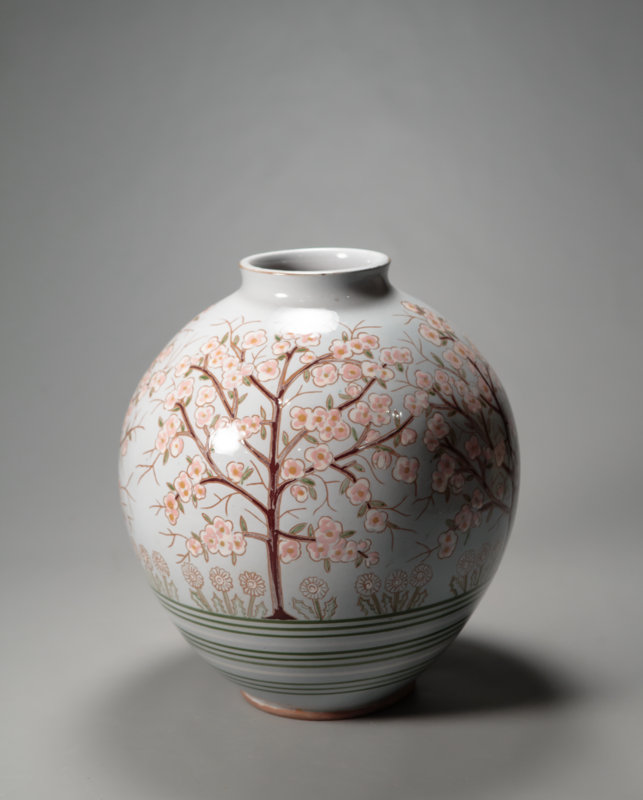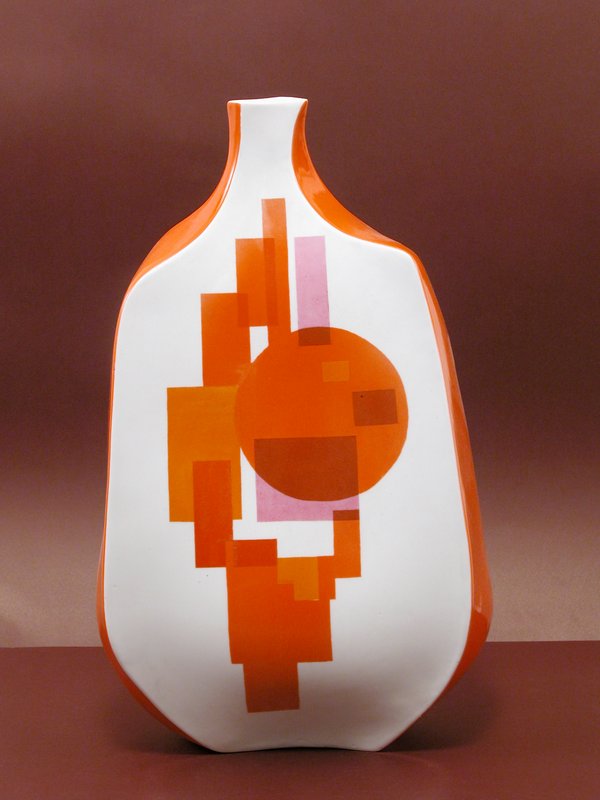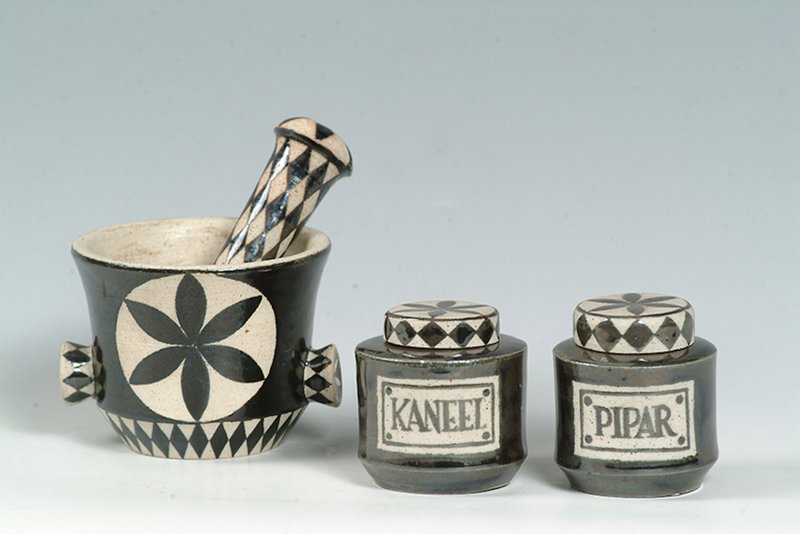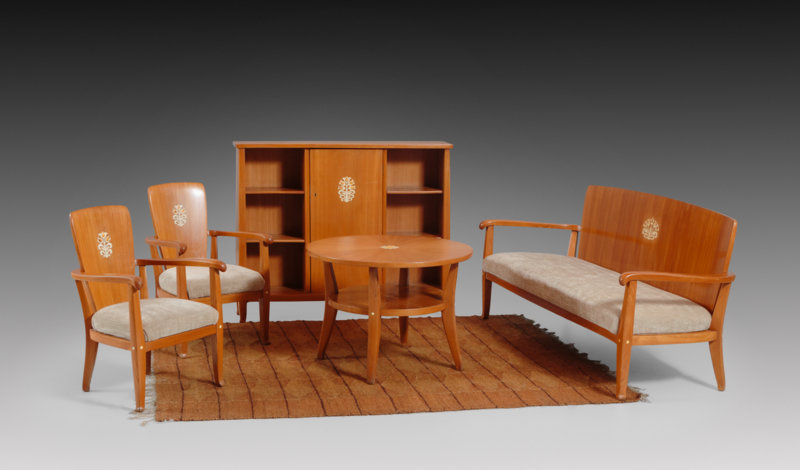In 1910, Austrian architect Adolf Loos published an essay “Ornament and Crime”, where he criticised décor in contemporaneous production, claiming that it is amoral to waste resources on adding unnecessary ornament. Loos was not the only one, other famous modernists, including Le Corbusier, were also indifferent or even hostile towards décor. The ‘ideal’ modern house is white, without any decorations. Yet it is only a fragment in the history of ornament. The 20th-century design included not only pure colours and innovative shapes but also diverse ornaments, and the study of them allows us not only to show a new side of modernism but also to demonstrate the variations of regional modernism.
This exhibition focuses on the phenomenon known as the Baltic Modernism. Through ornament, this exhibition presents the history of regional modernism of three Baltic countries of closely intertwined cultural histories during the Soviet occupation. The aim is to show the similarities and variations in the designs of the three countries by introducing the principles of local modernism when many objects and tendencies presented may not correspond to the paradigms of traditional modernism and, thus, fall in the realm of alternative histories. It is also interesting to observe an ornament in Soviet culture. On the one hand, an ornament carries an important role in objects influenced by crafts and folk arts, while on the other hand, it can also be seen as an anomaly in the production system built on rationalisation. Kaunas Public Library as a fascinating landmark from the same period is used as a background, to put the objects back into the context where and for which they were created.
The objects on photos are from the collections of Lithuanian National Museum of Art,
Latvian National Museum of Art and Estonian Museum of Applied Art and Design
Exhibition was supported by the Research Council of Lithuania.
Curator: Triin Jerlei (Vilnius University)
Graphic design: Jesse O’Neill
Contributors: Laura Lukoševičiūtė, Loreta Meškelevičienė, Džiuljeta Žiugždiene, Jūratė Meilūnienė, Kai Lobjakas, Kristi Paap, Dace Lavina, Huriye Armağan Doğan, Epp Jerlei, Velta Raudzepa, Virginija Jurėnienė, Dovilė Balevičienė, Ketli Tiitsar, Helen Adamson, Estonian National Archives, Lithuanian Archives of Literature and Art, Vilniaus Universitetas, RĖMAI.LT, Kristel and Andrus Jerlei.
 Soviet modernism in the Baltic States
Soviet modernism in the Baltic States
By the beginning of the Second World War, the three Baltic States had developed their local Western-inspired modernism. However, the Soviet occupation brought compulsory Stalinism in all arts, and factories were forced to use heavy Neohistorical models. Only after Stalin’s death in 1953, the changes emerged in official ideology. Designing in Neohistorical style was expensive and time-consuming, thus, there was a constant lack of commodities and it was economically necessary to rely on the modern style that was popular in the Western world. Amongst Baltic architects, applied and industrial artists, Stalinism had never been very popular, which caused the modernism to spread fast. This dissemination was aided by the cooperation of Baltic countries in the cultural sphere, caused by the small size of the States and their cultural connections. For example, Lithuanian jewellery artists studied at the State Art Institute of the Estonian SSR, while Estonian and Latvian industrial designers often visited the branch of Vilnius of VNIITE or All-Union Scientific Research Institute of Technical Aesthetics.
Ornament still persisted in Baltic modern design. Traditional décor was both an inspiration to industrial design and a frequent motif in the souvenir industry. At the same time, contemporary patterns emerged in local production. In standardised apartments, textiles and wallpapers were an effective way of enlivening and modernising interiors filled with monotonous furniture. Ornament helped to direct the attention away from the poor quality of materials and production. Décor was not always a free choice; factories were tasked with producing souvenirs and, thus, it is interesting to observe the compromise between “socialist” content and modern form. Although the exhibition focuses on industrial design, unique objects are also exhibited to illustrate the fact that all applied arts were intended to serve as the basis for mass production.
Applied arts exhibition in 1955
The connections between the three Baltic States were advanced by joint exhibitions. In the emergence of local modernism, the Baltic applied arts exhibition of 1955 played a major role. The exhibition took place in Tallinn Art Hall and on 10-15 June a conference was organised, focusing on the modernisation of industrial production of commodities in the Baltic States and the nature of modernism in a new post-Stalinist space. The general agreement was that in the centralised Soviet Union local applied arts and design must be developed and the contemporary ornament was particularly important:
Russian artist N. N. Zhukov:
“Ornament can be excellent, but at the same time unfitting, it all depends on its rational application, dedicated place, its relation to form and function, the taste and restraint of the artist, the reasons that stimulated his activities.”
 Russian art theoretician A. B. Saltykov:
Russian art theoretician A. B. Saltykov:
“Separated from the object, ornament never creates the illusion of a finished work of art, no matter which frame it is placed in and how beautiful it is […] On the contrary, placed on a suitable object, it acquires a meaning that had been missing, achieves a final aesthetic value.”
Lithuanian ceramic artist J. Mikėnas:
“It is necessary to impose an order that every republic locally produces all models necessary for the industry. Only this way can a national form of products develop and in mass production one can avoid objects standardised to boredom.”
Estonian ceramic artist H. Kuma:
“All utilitarian and most decorative objects are solved ornamentally. But here too is a clear and clean rhythm of décor, the abundance of its colours, not only nationally peculiar but especially contemporary elegance of beauty, form and cut – emotionally mirroring the quotidian rhythms and aesthetic tastes of Soviet people.”
(Estonian National Archives, ERA.R-1665.2.160)
Ornamentalism
In November 1955, the Union of Architects of the Soviet Union published a decree against “ornamentalism”. Industrial production reoriented to modernism and excess in ornament was condemned. Yet, the ornament remained in the Baltic design throughout the whole Soviet period, acquiring new outlets and manifestations. Some of the objects here represent international influences, others juxtapose to the global style.
Production
Lack of raw materials and poor technological possibilities restricted local artists from designing minimalist products. Thus ornament was a possibility to both direct attention away from deficiencies in production quality and to simply increase the selection of products. Baltic factories often used craft techniques in production; many objects on display here are painted by artists.
Baltic design was more influenced by the West and the Nordic countries than the production in the majority of the Soviet republics. On the one hand, in Estonia, it was possible to access Finnish television. On the other hand, the information on the design of capitalist countries spread through official media industrial art exhibitions and other channels. For local citizens, the Western style was an opportunity to relate to the world of the other side of the “Iron Curtain”, while to the Soviet power the Baltic States were turned into a local version of the mysterious “West” to spread the myth of the Union as a happy multicultural society.
“For us, the products of the Baltics bore the unmistakable stamp of the European culture we so desired.”
(Iurii Gerchuk)
Local ornament in modernism
- National ornament.
The national ornament was popular in the Baltic applied arts already at the beginning of the 20th century and during the Independence era between the two world wars. With the Soviet occupation, the national style became the only politically acceptable alternative to the grandiose Stalinist Neohistoricism. After Stalin’s death, the national ornament remained popular, although it was modernised. Baltic artists were also inspired by other cultures. - Nature and local views.
The local ornament was often inspired by nature, for example, patterns inspired by plants. Floral décor is especially common on porcelain sets. Nature has also inspired the Baltic design in a broader sense, i.e. in choice of materials. Wood and leather are widely represented, as well as amber holds a significant position both in Latvia and Lithuania.
Besides landscapes, one can find local scenes from urban and rural life. Figures in national costumes are popular. - Abstractionism
Geometric décor was a compromise between modernism and ornament, allowing the surface to be embellished in a varied but contemporary manner. Diverse patterns have changed throughout time, mirroring local and international styles. The abstract ornament could have been a colourful square pattern or simple glazing in ceramics.

